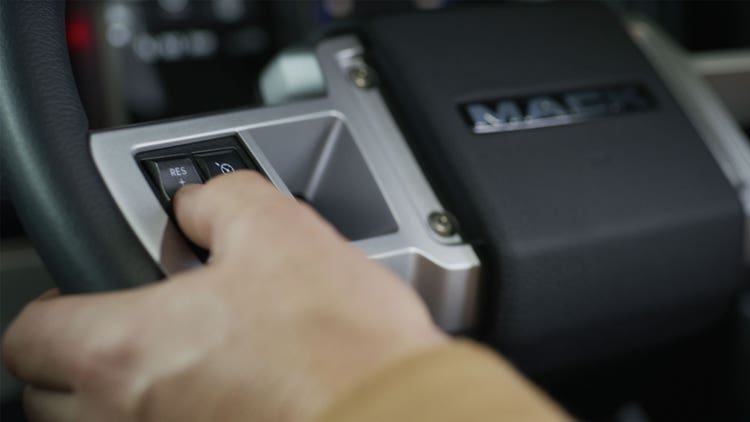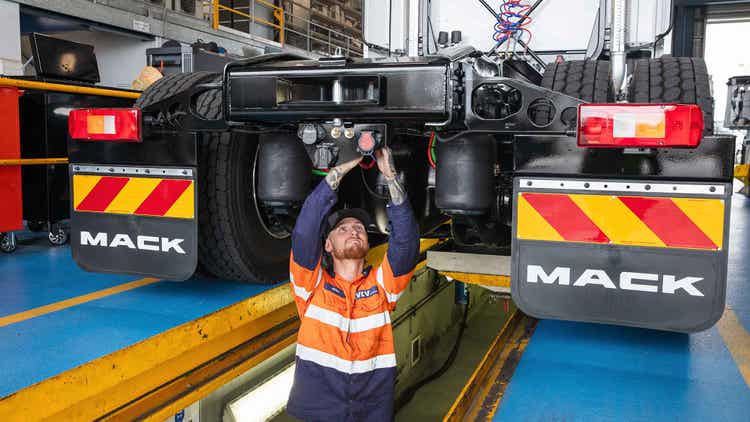
Driver Development and Energy Efficiency
Fuel is often a transport company's biggest expense, accounting for at least a third of total costs. Improving fuel economy involves understanding key factors: truck specification, maintenance, driver performance, and fleet management.
What Impacts Fuel Consumption the Most?

The Truck Itself
To achieve optimal fuel economy, the truck must first be specified correctly focusing on the powertrain, aerodynamics, and rolling resistance. Beyond specification, you can also improve fuel efficiency with the right truck services to maintain and manage your fleet.
Driver Performance
The best drivers are typically 5-10% more fuel-efficient than average drivers, with the difference sometimes being as high as 20%. Effective use of cruise control, driving at the right speed, and correct braking are some of the ways driver performance can impact your bottom line.

Key Questions to Improve Fuel Consumption, Emissions, and Fleet Costs
How Do You Optimise the Powertrain?
The powertrain is one of the biggest factors in a truckʼs fuel economy. Once this is specified, much of your truckʼs fuel consumption is fixed – so it is crucial to get it right. While every powertrain component makes a difference – from the rear axle to the oil in the transmission – the three components with the largest impact are the engine, gearbox and cruise control.
Recent technological advancements are taking each of these components to new heights of efficiency.
Engine
Innovations like the MP8HE (High Efficiency) Turbo Compound engine deliver lots of power and better fuel economy than eSCRs, and also significantly reduce AdBlue usage. Designed specifically for Mack, it's ideal for a wide variety of applications including fleets that run variable load applications like tanker, bulk haul and flat-bed deliveries.
For long-haul transports, we offer a fuel-optimised powertrain package called m DRIVE. It combines our MP8HE engines with the map-based Predictive Cruise, m DRIVE with fuel-efficient rear axles and engine idle shutdown.


Transmission
The automated m DRIVE transmission is an automated manual transmission originally built for Mack. This 13-speed, two-pedal transmission also uses real-time driving data to make every shift extremely smooth and precise, maximising driver comfort, payload and fuel economy.
For extreme precision, everything from the truck’s speed and weight, to the road grade and torque demand must be taken into account. The m DRIVE evaluates these factors automatically so that every gear change is perfectly timed. The system also communicates with the engine, allowing it to adjust the revs and brakes for best performance.
Predictive Cruise
The latest predictive cruise control (Predictive Cruise) technology uses knowledge about the road ahead to optimise truck speed, gear changes and engine braking on hilly terrain.
Predictive Cruise features a high-resolution map for exact topography positioning. As the truck approaches a hill, the system uses the map to maximise the truck’s kinetic energy and reduce fuel consumption.

How Do You Improve Aerodynamic Performance?
Aerodynamics are another specification factor with a big impact on truck fuel consumption. Performance can be affected by everything from external accessories to mirrors and front spoilers, but most important are:
- Cab design: height, roof angle and design all make a difference
- Roof spoiler and cab side deflectors: it’s best to ensure the roof spoiler is factory-fitted from the start – mounting it even 5-10cm too low or too high can impact potential fuel savings
- Chassis skirts and fender flares: also play a big effect on fuel savings
- Trailer: keeping them in top condition and wheel-alignment is key.
How Do You Minimise Rolling Resistance?
Rolling resistance is the third biggest specification factor impacting fuel. This is primarily determined by the tyres and wheel alignment.
To minimise rolling resistance, use fuel-optimised tyres rather than “multipurpose” tyres and avoid driving with under-inflated tyres or misaligned axles. Misalignment leads to instability in steering and causes the truck to take up more space on the road since the wheels do not travel in the same path. This increases air resistance, which affects fuel economy.

How Do Truck Maintenance, Fleet Management Services, and Connectivity Reduce Fuel Costs?

Service and Maintenance
A well-maintained truck is a more fuel-efficient truck. A tailored service contract, with regular service provided by knowledgeable and skilled technicians, prevents fuel-wasting problems like brake drag and seized brakes, clogged air filters, boost pressure leakages and fuel leaks.
Fleet management
Smart fleet management services like Mack Connect give you lots of ways to improve fuel economy. Mack Connect is a digital interface that gives you a clear overview of fuel consumption, driving distance and emission levels to see where savings can be made. Mack Connect positioning can also help simplify route planning.

How Does Driver Performance Impact Fuel Consumption?
Investing in your drivers is just as important as investing in your trucks. Skilled and motivated drivers are proven to be more productive, efficient and safe. When it comes to saving fuel, the most important thing a driver can do is develop good habits regarding:
- Cruising speed
- Cruise control
- Braking
Other factors include anticipatory driving, idling and driving in city traffic.
The best way to boost driver performance – and your bottom line – is to take advantage of our driver training courses. Besides saving fuel, they can also boost productivity, increase your driversʼ industry knowledge, improve safety, and help you attract and retain the best drivers.
Skilled drivers are a valuable asset.
Download the brochure or speak to your nearest dealer for more information about Mack Driver Training.


